Tired of buying all your travel gifts for the folks back home at the same old touristed-out temples and corporate malls when you’re in Tokyo?
Then try some of the most unusual, storied and just plain odd shopping streets – called shotengai:
Sugamo Jizo Dori Shopping Street
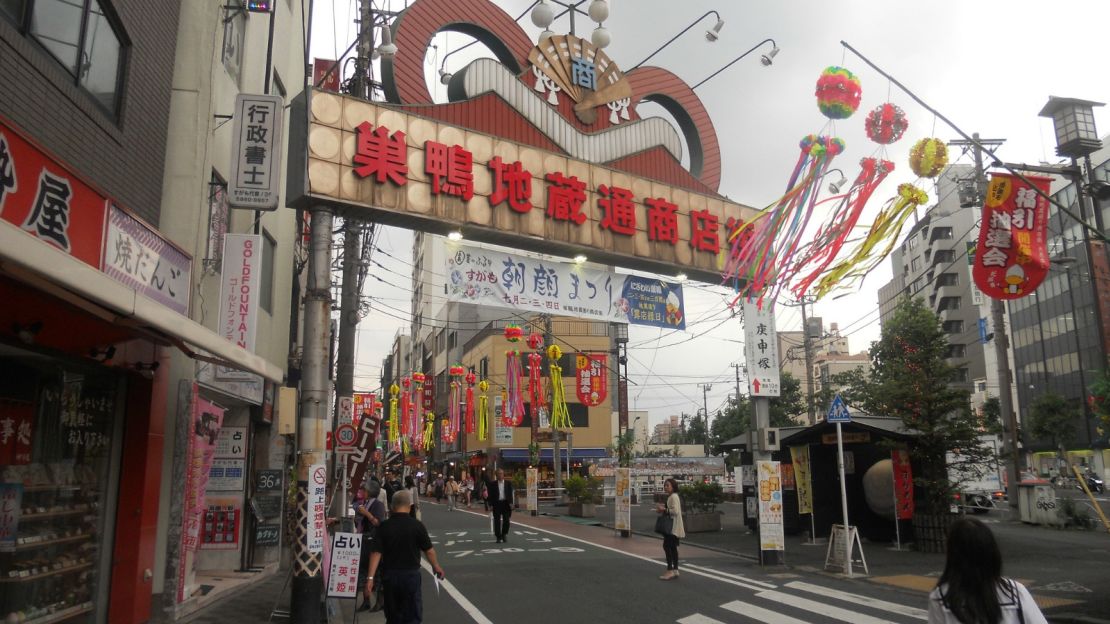
Sugamo, as an older Japanese woman once gleefully informed me, is like “Harajuku for grannies.” But, rather than hordes of purple-haired old folks shuffling down the street dressed in Gothic Lolita fashion, Sugamo’s sartorially minded seniors are all about the aka-pantsu (red underwear).
The color red is believed to have health-restoring properties, like increasing heart function, body temperature and blood flow; strolling down Jizo Dori, you’ll see displays of fire-engine red underthings nearly everywhere you look.
The Maruji chain, which claims to have originated the fad, has four outlets in Sugamo alone.
Koganji Temple is another popular spot, where the famed Togenuki Jizo statue is purported to cure illness and extend life.
For the under-70 crowd, try Chirimen for cute, modern takes on furoshiki cloths and yukata, plus wallets, coffee mugs and other everyday items adorned with wa-inspired patterns.
Sugi Yohoen stocks dozens of honeys, jams and juices, plus nihonshu infused with ginger, yuzu and other concoctions; you can sample almost everything at the tasting counter.
Access: Sugamo Station (JR Yamanote line and Mita Subway line) or Koushinzuka Station on the Toden Arakawa streetcar line.
Asakusa Nakamise Shopping Street
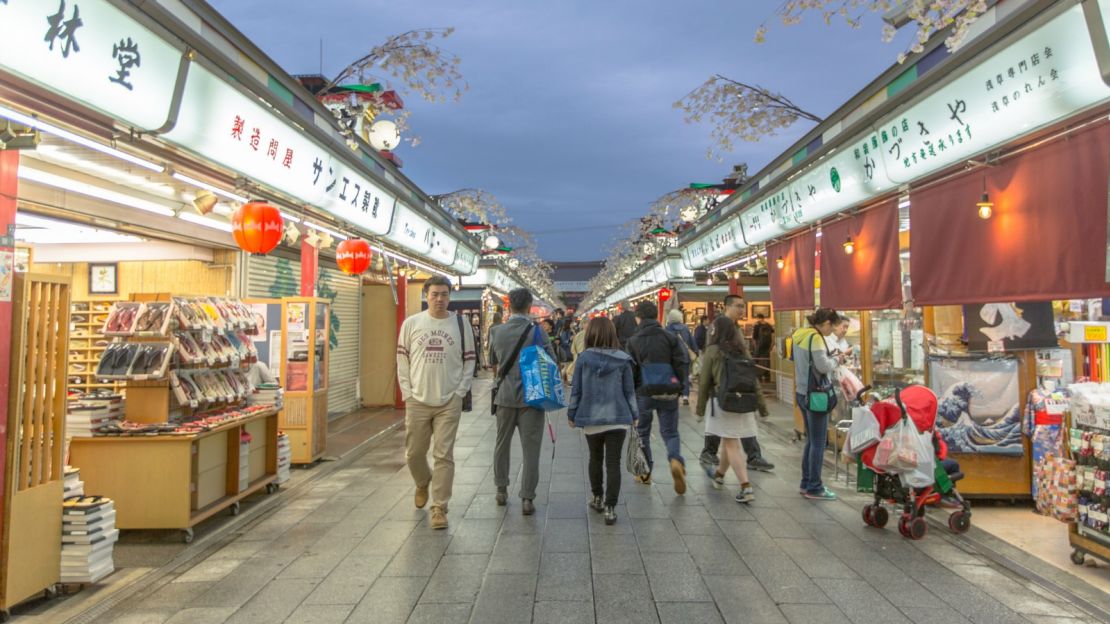
Asakusa’s Sensoji temple may be a tourist hotspot, but that doesn’t mean you can’t shop a little different to the masses.
This bustling shotengai, one of Japan’s oldest, starts at the famed Kaminarimon gate and stretches roughly 250 meters to the foot of Asakusa’s Sensoji temple. Rain or shine, it is sure to be packed with tourists exploring the 90 or so shops that have taken over the area.
Given the crowds ahead, it’s a good idea to fortify yourself before doing battle; lucky, then, that Nakamise is known for some of the best senbei (baked rice crackers), and ningyo-yaki cakes around.
While there are several stores to choose from, Ichibanya is one of the most famous – and with over 100 varieties, one of the most prolific, too.
The vast majority of shops along the Nakamise shotengai specialize in trinkets and tourist goods galore. Offerings run the gamut from the traditional (swords, pottery, hand-painted fans) to the kitsch (ninja costumes, plastic geta and mini yukata decorated with anime characters).
Fukumitsuya is one of the larger stores, and a good one-stop shopping option to impress the folks at home with T-shirts and bags with Japanese characters; cute maneki-neko (“beckoning cat”) figurines; and traditional kokeshi dolls.
Access: A three-minute walk from Asakusa Station.
Kappabashi Dougu Street
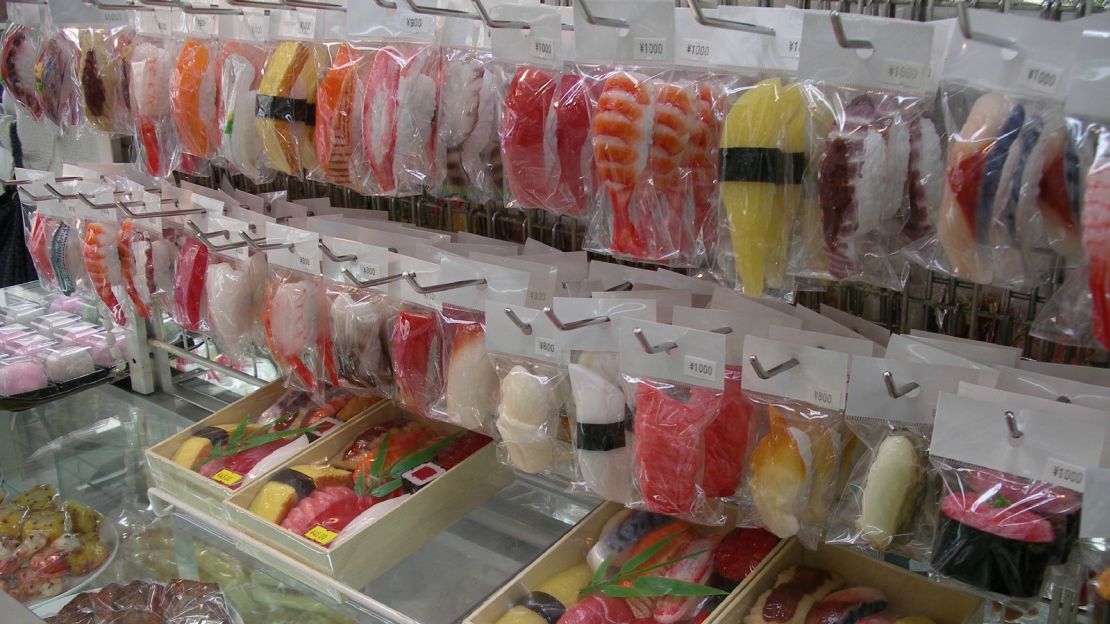
It’s hard to beat Kappabashi for sheer niche appeal. This 800-meter long shopping street is home to approximately 170 stores, and all of them specialize in restaurant-related goods.
Whether you’re looking for typical household kitchen tools, French cookware, Japanese knives or obscure Alsatian pottery, Kappabashi probably has a store that stocks it.
Yokoyama specializes in tools for making and decorating cakes and cookies, including metal seals to burn designs into the tops of cakes, and enough cookie cutters to keep Mom baking for months.
For budding restaurateurs, Minegishi Seisakujo is the place to go for menu stands, interior decor items and hand-painted signs of all kinds.
But it’s the food samples that really make Kappabashi worthy of a spot on our list. The street boasts four shops specializing in plastic recreations of everything from hamburgers to tempura that are so realistic you’ll want to bite right in.
Maizuru, one of the largest, also sells novelty items like sushi clocks and cell phone straps decorated with avocado, ice cream and okonomiyaki.
Access: A five-minute walk from Taharacho Station (Ginza line) or Iritani Station (Hibiya line).
Nakano Broadway
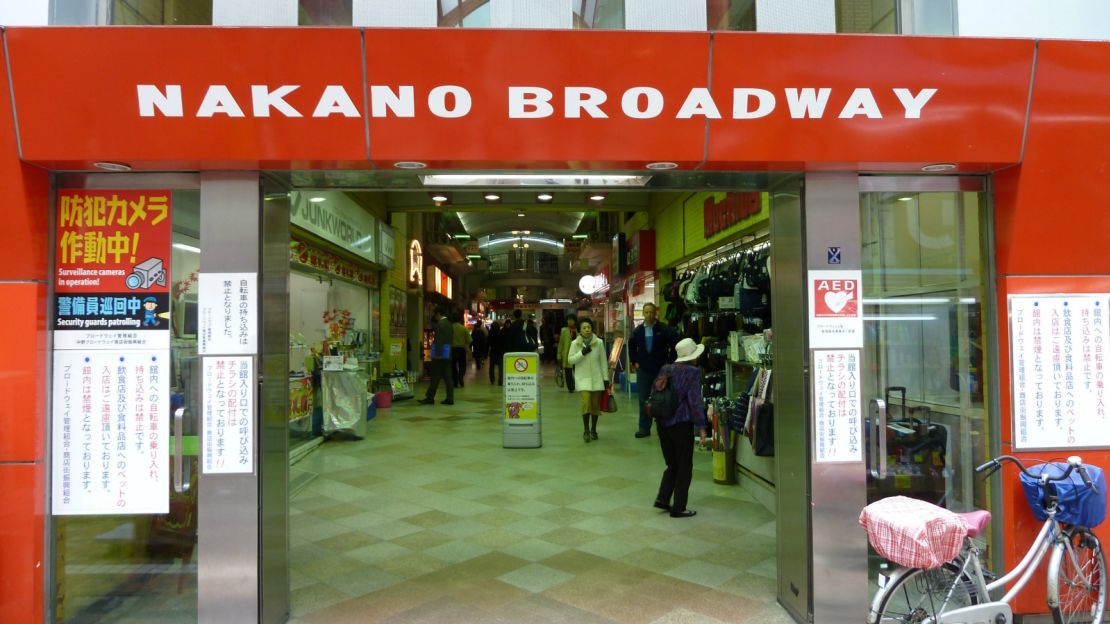
Akihabara is for only the tiredest of tourists. These days, in-the-know anime and manga geeks satisfy their cravings at Nakano Broadway. This indoor shopping street holds four floors of cramped, tiny shops, each catering to a unique subculture.
Otaku goods make up the majority – super-retailer Mandarake has no fewer than 23 mini-shops scattered throughout Nakano Broadway, from Henya (vintage radios, Showa-era collectibles and other bits of nostalgia) to the Cosplay Kan (anime-and manga-related costumes, wigs and accessories).
Utahime Doumu, a niche shop devoted to female idols and pop stars through the ages, manages to squeeze myriad CDs, photo collections and trading cards into its tiny interior. Western antiques shop Omochabako stocks Kewpie dolls, Beatles bobble-heads and Marilyn Monroe figurines.
Nakano Broadway boasts lots for movie fans as well, like the treasure trove of vintage movie posters, flyers and pamphlets at Kanransha to original animation artwork at Anime World Star.
Access: Via Sun Mall shopping arcade from Nakano Station, north exit.
Ameya Yokocho
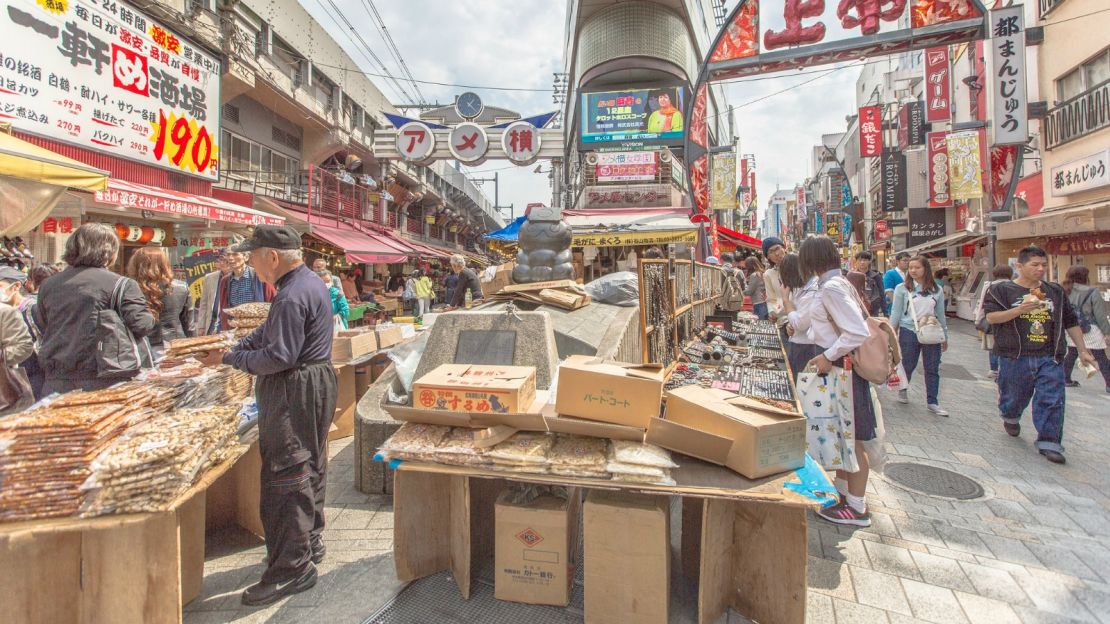
Ameya Yokocho, or “Ameyoko” as the locals would say, is one of the few places where you can still get a taste of Tokyo’s down-and-dirty, Shitamachi side. The street got its start after World War II as a black market for food and clothing, as well as valuable “American” goods like chocolate and nuts.
Nowadays, Ameyoko is filled with the usual mix of clothing shops, tourist goods and vendors selling fresh fish, meat and veg. But, as the haggling customers, energetic hawkers and bustling crowds attest, the area still takes pride in its unvarnished roots.
Ohtsuya, established for 60 years, stocks a dizzying array of spices and beans. One of the area’s biggest stores is Daimaru, a local favorite specializing in dried nori seafood and various other dried foods, as well as kimchi and Korean liquors.
Access: Ueno Station, central exit; Okachimachi Station, north exit.
Editor’s note: This article was previously published in 2011. It was reformatted and republished in 2017.
















